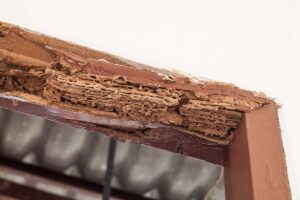Flying Ants Versus Termites: How Do You Know Which Is Which?
Uncover the differences between flying ants and termites with our expert guide. Learn to identify and control these pests for a pest-free home. Discover now!


Flying Ants Versus Termites: How Do You Know Which Pest You Have?
Introduction to Flying Ants and Termites
Are you seeing winged insects swarming around your home and wondering if they’re flying ants or termites? Knowing the difference between these pests is essential, as their presence can signal potential damage to your property. In this blog post, we’ll explore the physical and behavioral distinctions between flying ants and termites, how to identify infestations, and most importantly, how to protect your home from these destructive invaders. Let’s dive into the world of flying ants versus termites!
Physical Differences Between Flying Ants and Termites
Regarding the physical differences between flying ants and termites, there are a few key characteristics to look out for. Their bodies have distinct features that set them apart. Flying ants have pinched waists and elbowed antennae, while termites have straight bodies with straight antennae.
Additionally, their wings differ in size and shape. Flying ants have two sets of wings with the front pair larger than the back pair. On the other hand, termites have two pairs of wings that are equal in size and shape.
Another noticeable contrast is their coloration. Flying ants typically have darker bodies with lighter-colored wings, while termites are usually pale or translucent throughout their bodies and wings.
By familiarizing yourself with these physical attributes, you can better identify whether you’re dealing with flying ants or termites when encountering winged pests around your home.
Behavioral Differences Between Flying Ants and Termites
Flying ants and termites may look similar at first glance, but their behaviors set them apart. When it comes to movement, flying ants have elbowed antennae and a narrow waist, making them more agile in flight compared to termites. Flying ants are also attracted to light sources and can be seen swarming around windows or outdoor lights during mating season.
On the other hand, termites tend to stay hidden within wood structures or underground colonies. They avoid light and prefer dark, damp environments where they can feed on cellulose materials unnoticed. Termites construct mud tubes for protection as they travel between their nest and food source.
In terms of diet, flying ants primarily feed on nectar while searching for a mate before establishing new colonies. In contrast, termites feed on wood 24/7 as they work together to break down cellulose with the help of symbiotic microorganisms in their gut.
Understanding these behavioral differences is crucial in identifying which pest may be infesting your home so that appropriate treatment measures can be implemented promptly.
Identifying Infestations and Damage

What Do Termites Look Like & Signs Your Home Has Them
Another sign of an infestation is the appearance of mud tubes along walls or foundations. Termites use these tunnels for protection and moisture as they travel between their nest and food source. If you spot any unusual structures like this around your home, it’s essential to investigate further.
Damage caused by termites often includes hollow-sounding wood, buckling paint, or sagging floors. On the other hand, flying ants may leave behind small piles of debris from excavating wood for nesting purposes.
Regular inspections and prompt action are crucial to minimizing damage from both pests. Consulting with a professional pest control service can help accurately identify the problem and implement effective treatment plans tailored to your specific situation.
Prevention and Treatment for Flying Ants and Termites
When it comes to dealing with potential infestations of flying ants and termites, prevention is key. To prevent these pests from entering your home, make sure to seal any cracks or openings in windows, doors, and foundation walls. Keep your surroundings clean and free of debris that could attract these insects.
Regularly inspect wooden structures like decks, porches, and fences for signs of damage or decay as these are prime targets for termites. Consider using termite-resistant materials when building or renovating your home. Additionally, ensure proper ventilation in crawl spaces to reduce moisture levels which can attract both flying ants and termites.
If you suspect an infestation, it’s best to contact a professional pest control service to assess the situation and recommend appropriate treatment options. They may suggest bait systems, chemical treatments, or even fumigation depending on the severity of the infestation.
Remember that early detection is crucial in preventing extensive damage caused by these pests. Stay vigilant and take proactive steps to protect your home from flying ants and termites year-round.
Conclusion: How to Protect Your Home from These Pests
To protect your home from the threat of flying ants and termites, it is crucial to be able to differentiate between the two pests. By understanding their physical characteristics and behaviors, you can identify infestations early on and take appropriate action.
Regular inspections of your property can help detect any signs of these pests before they cause significant damage. Implementing preventive measures such as minimizing moisture around your home, sealing entry points, and keeping woodpiles away from the house can reduce the risk of infestation.
If you suspect an infestation or notice any damage caused by flying ants or termites, it is essential to contact a professional pest control service immediately. They have the expertise and tools needed to effectively eradicate these pests from your home.
By staying informed about flying ants versus termites and taking proactive steps to safeguard your property, you can ensure a pest-free environment for you and your family. Remember that early detection and swift action are key in protecting your home from these destructive insects. Get Your Free Inspection Today!

